Since I just wrote something else on a topic that plays directly into your question here, I'll write something about a very simple case. This would be for a diode current when including bulk internal resistance or external series resistance (or both.) I provided the closed solution using the productlog function at that link. But if you want to avoid the use of productlog for a closed solution, a parametric approach is quite useful.
The example I gave there is:
$$y=A\cdot\exp\left(B\cdot \left[x-C\cdot y\right]\right)$$
With \$A=3\times 10^{-15}\$, \$B=9.6\$, and \$C=100\$.
You can readily generate an alternative form by setting \$t=x-C\cdot y\$. Then:
$$\begin{align*}
y&=A\cdot\exp\left(B\cdot t\right)
\\\\
x&=t+C\cdot y
\\\\
&=t+C\cdot A\cdot\exp\left(B\cdot t\right)
\end{align*}$$
Now you have it in parametric form and can plot it out. If you constrain things so that \$0 {\le}\, t\, {\le} 3.072\$ then you will get the same plot shown for the Exact curve here.
Here's a parametric plot using the above equations performed at this website:

Since resistors are frequently used with LED diode indicators, this is not only a common situation in electronics for parametric equations but also perhaps a better one to show why the skill can be helpful when faced with semiconductor equations, more generally. It may help avoid difficult mathematical manipulation.
Added:
In the linked answer above, there I said that \$C\$ is a negative feedback term. The above parametric equations (and your question) make a good segue into this narrative about NFB.
Now the parameter \$t\$ above, it's possible to compare \$\frac{\text{d} }{\text{d} t}y\$ with \$\frac{\text{d} }{\text{d} t}x\$ to get \$\frac{\text{d}}{\text{d} x}y\$:
$$\begin{align*}
\frac{\text{d} }{\text{d} t}y &=A\cdot B\cdot \exp\left(B\cdot t\right)
\\\\
\frac{\text{d} }{\text{d} t}x &=1+ C\cdot A\cdot B\cdot \exp\left(B\cdot t\right)
\\\\\therefore\\\\
\frac{\text{d} }{\text{d} x}y &=\frac{A\cdot B\cdot \exp\left(B\cdot t\right)}{1+ C\cdot A\cdot B\cdot \exp\left(B\cdot t\right)}
\end{align*}$$
Set \$A_0\left(t\right)=A\cdot B\cdot \exp\left(B\cdot t\right)\$ and the above instead becomes:
$$\frac{\text{d} }{\text{d} x}y =\frac{A_0\left(t\right)}{1+ A_0\left(t\right)\cdot C}$$
Which is a very familiar-looking closed loop gain equation often seen written out in the form of:
$$A_{_\text{CL}}=\frac{A_0}{1+ A_0\cdot \beta}$$
This similarity begs for an explanation:

simulate this circuit – Schematic created using CircuitLab
The above diagram is another way to look at the LED + resistor (in series) behavior. There is an applied source voltage, which once the resistor's voltage drop is subtracted off, is then applied to the LED diode.
It's pretty easy to see that \$t=x-C\cdot y\$, above. The question is what to put in for \$A_0\left(t\right)\$ as the gain factor. Here, by dimensional analysis alone, it's certain that to get a current from a voltage the multiplying factor must be in Siemens. \$y=A\cdot\exp\left(B\cdot t\right)\$ doesn't yield Siemens. But it's derivative, \$\frac{\text{d} }{\text{d} t}y =A\cdot B\cdot \exp\left(B\cdot t\right)\$, does. And that's the I/V conversion we need for \$A_0\left(t\right)\$.
This produces what is now already determined. Nice.
A more complex problem might be working out the following current mirror circuit that is found in an old opamp, the 741: found in this EESE schematic:

simulate this circuit
I'll use LTspice for simulation, which uses \$V_T=25.865\:\text{mV}\$ by default. Both of the included 2N2222 and 2N3906 BJTs have \$I_{_\text{SAT}}=10\:\text{fA}\$. Assume \$V_{_\text{EE}}=0\:\text{V}\$ and \$V_{_\text{CC}}=15\:\text{V}\$. A quick estimate for \$R_1\$'s current is \$\approx 350\:\mu\text{A}\$. (The diode-connected BJTs, \$Q_1\$ and \$Q_2\$, slightly dropping some of the applied voltage.) This means that \$V_x=V_T\cdot\ln\left(\frac{350\:\mu\text{A}}{10\:\text{fA}}\right)\approx 628\:\text{mV}\$.
Assuming collector and emitter currents the same, the unknown current is about:
$$I_{R_2}= I_{_\text{SAT}}\cdot\exp\left(\frac1{V_T}\cdot \left[\vphantom{\frac1{V_T}}V_x-R_2\cdot I_{R_2}\right]\right)$$
Set \$t=V_x-R_2\cdot I_{R_2}\$. Then:
$$\begin{align*}
I_{R_2}&=I_{_\text{SAT}}\cdot\exp\left(\frac{t}{V_T}\right)
\\\\
V_x&=t+R_2\cdot I_{R_2}
\\\\
&=t+R_2\cdot I_{_\text{SAT}}\cdot\exp\left(\frac{t}{V_T}\right)
\end{align*}$$
\$t\$ will be small, so I'll multiply it by 100 to magnify it in the plotting. Keep it in mind:

This shows that I will expect to see about \$16\:\mu\text{A}\$ for the unknown current and that the voltage across its base-emitter should be about \$548\:\text{mV}\$.
Let's run LTspice:

Looks the same to me. Just as predicted. For example, \$V_x-V_y=628\:\text{mV}-80\:\text{mV}=548\:\text{mV}\$. (Note that I removed the Early Effect from Q3, which isn't accounted for in the above analysis.)
All of the above assumes access to software and computers. But in that case, there are already nice solvers available. Parametric equations are still a nice tool to be aware of as that allows bringing more tools to the table when facing some problem. And having more tools to try can be nice.
In the above problem (the 741 opamp one), and with only a calculator (or a book of math tables) on hand to work with, I'd do things still differently:
$$\begin{align*}
I_{R_2} &= I_{_\text{SAT}}\cdot\exp\left(\frac1{V_T}\cdot \left[\vphantom{\frac1{V_T}}V_x-R_2\cdot I_{R_2}\right]\right)
\\\\
R_2\cdot I_{R_2} &= R_2\cdot I_{_\text{SAT}}\cdot\exp\left(\frac1{V_T}\cdot \left[\vphantom{\frac1{V_T}}V_x-R_2\cdot I_{R_2}\right]\right)
\\\\
V_T\ln\left(\frac{R_2\cdot I_{R_2}}{R_2\cdot I_{_\text{SAT}}}\right) &= V_x-R_2\cdot I_{R_2}
\\\\
R_2\cdot I_{R_2} &= V_x-V_T\ln\left(\frac{R_2\cdot I_{R_2}}{R_2\cdot I_{_\text{SAT}}}\right)\\\\
x_{i+1} &=V_x-V_T\ln\left(\frac{x_i}{R_2\cdot I_{_\text{SAT}}}\right)
\end{align*}$$
That quickly iterates to the right value. Assume \$x_0=100\:\text{mV}\$ drop across \$R_2\$ to start: \$x_1\approx 74.1\:\text{mV}\$, \$x_2\approx 81.8\:\text{mV}\$, \$x_3\approx 79.3\:\text{mV}\$, \$x_4\approx 80.1\:\text{mV}\$, \$x_5\approx 79.8\:\text{mV}\$, \$x_6\approx 79.9\:\text{mV}\$... and I'd stop there, for sure. Now I can compute the current as \$\frac{79.9\:\text{mV}}{5\:\text{k}\Omega}=15.98\:\mu\text{A}\$. Same answer without all the software, graphics tools, etc.
So I'm not suggesting taking any particular method. Just look at some situation with tools in hand, make a choice and apply it. If that doesn't quite fit well, there are other tools. But it is always true that fluency with more tools is better.




